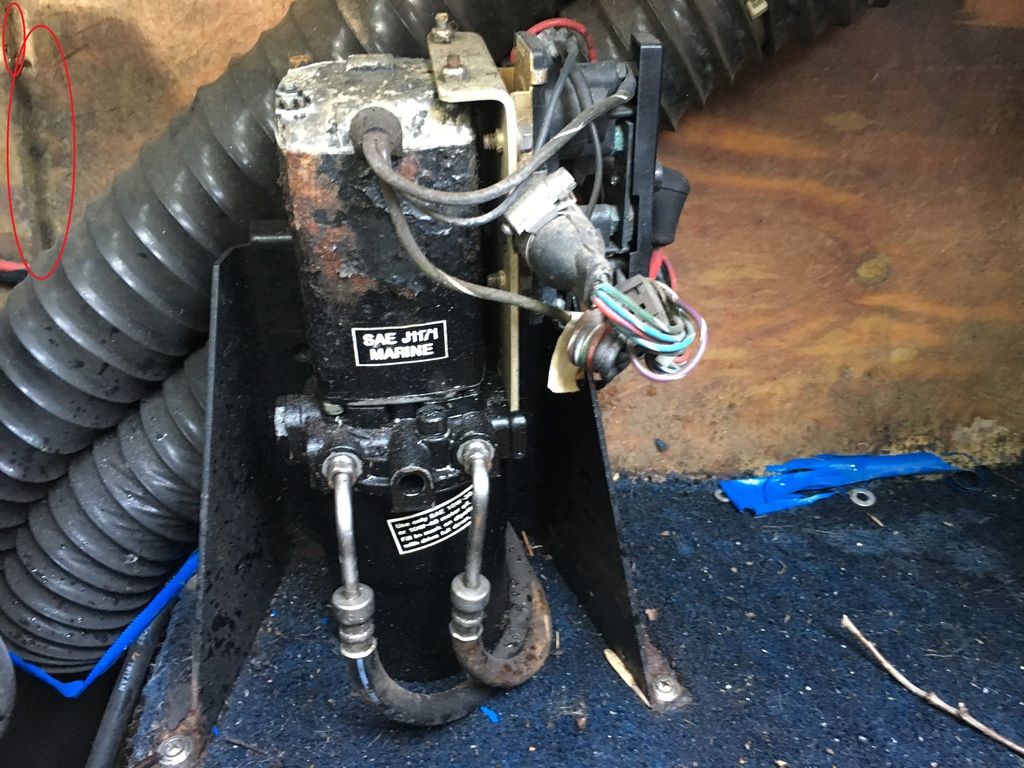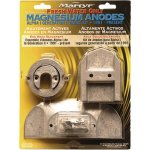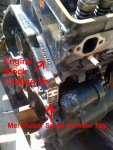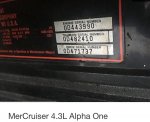Hi guys! So I just joined the forums, I have always referenced this site for reliable information and I think it's about time I joined!! Anyway, here's the deal:
I've got a Four Winns Horizon 190 Cuddy that has been passed down to me from my father. I grew up in this boat, family trips every other season and for the most part the boat has been taken care of over the years. However, in the past 5 years my family had not been going on trips and my parents resorted to having a local marina dock and then dry dock the boat for the seasons. BUT we learned that the marina was NOT taking proper care of the engine.. When we picked it up last season, it would turn over but sounded awful. We took it to a mechanic who said that the engine looked like it had no maintenance done in YEARS. He checked the oil and said it was like tar coming out. Still, the engine did crank over and idled. Obviously this was very upsetting to hear considering that we paid a few thousand dollars over the years for this marina to properly care for our boat in the off-seasons.
So this is where we are at... The boat has been sitting in our backyard for about 8-10 months. We kept it covered and the outside cleanish for minor upkeep. This week my father said that if I can get the boat running again, it's mine.
SO, I'm a 24 year old college student with no boat repair experience at all. However, I do understand car engine pretty well and I always do my own brakes, oil changes and so forth. I guess what I am saying is I'm ready to learn whatever I have to and put in the very hard work it will take to get this boat seaworthy again.
What I'm hoping you guys can help me with is to tell me where I should start. I have pictures attached of various parts of the boat that I took today.
Firstly, what can I do to this boat without actually removing the engine (the hard part). Logically, what I want to do first is to flush the oil and gas lines (if I can) and replace the battery and go ahead and try to turn her over.. If she fires up I figure that will give me a good starting point. From there, I'm not sure what else I can do to tune up this engine besides taking it out completely.
I am considering rebuilding the engine entirely... But if I can get away with just doing a tune up and some minor replacements/repairs then I'd like to go that route too.
Anyway, thank you so much for reading all of this.. I'm glad to be starting this project and I hope with your advice I can learn where to start.
Oh and by the way, the transom on this boat is fantastic.. I know nothing about boats mind you.. But from what I can tell, the engine mounts/stringers/transom seem to still be very solid and didn't sound hollow or weak when I tapped them with a screwdriver. No holes or cracks either. Even the floor still has some nice sturdiness to it. Sure, there's some slightly soft spots on the surface but nothing major.
Please let me know if there is any more info you guys need to better advice me on how to tackle this project. THANK YOU SO MUCH!!!
I will add pictures in a reply post to this one!
I've got a Four Winns Horizon 190 Cuddy that has been passed down to me from my father. I grew up in this boat, family trips every other season and for the most part the boat has been taken care of over the years. However, in the past 5 years my family had not been going on trips and my parents resorted to having a local marina dock and then dry dock the boat for the seasons. BUT we learned that the marina was NOT taking proper care of the engine.. When we picked it up last season, it would turn over but sounded awful. We took it to a mechanic who said that the engine looked like it had no maintenance done in YEARS. He checked the oil and said it was like tar coming out. Still, the engine did crank over and idled. Obviously this was very upsetting to hear considering that we paid a few thousand dollars over the years for this marina to properly care for our boat in the off-seasons.
So this is where we are at... The boat has been sitting in our backyard for about 8-10 months. We kept it covered and the outside cleanish for minor upkeep. This week my father said that if I can get the boat running again, it's mine.
SO, I'm a 24 year old college student with no boat repair experience at all. However, I do understand car engine pretty well and I always do my own brakes, oil changes and so forth. I guess what I am saying is I'm ready to learn whatever I have to and put in the very hard work it will take to get this boat seaworthy again.
What I'm hoping you guys can help me with is to tell me where I should start. I have pictures attached of various parts of the boat that I took today.
Firstly, what can I do to this boat without actually removing the engine (the hard part). Logically, what I want to do first is to flush the oil and gas lines (if I can) and replace the battery and go ahead and try to turn her over.. If she fires up I figure that will give me a good starting point. From there, I'm not sure what else I can do to tune up this engine besides taking it out completely.
I am considering rebuilding the engine entirely... But if I can get away with just doing a tune up and some minor replacements/repairs then I'd like to go that route too.
Anyway, thank you so much for reading all of this.. I'm glad to be starting this project and I hope with your advice I can learn where to start.
Oh and by the way, the transom on this boat is fantastic.. I know nothing about boats mind you.. But from what I can tell, the engine mounts/stringers/transom seem to still be very solid and didn't sound hollow or weak when I tapped them with a screwdriver. No holes or cracks either. Even the floor still has some nice sturdiness to it. Sure, there's some slightly soft spots on the surface but nothing major.
Please let me know if there is any more info you guys need to better advice me on how to tackle this project. THANK YOU SO MUCH!!!
I will add pictures in a reply post to this one!























